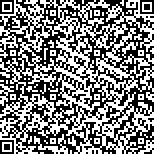| 摘要: |
| 目的 作物遥感分类是作物面积监测的核心问题,也是进一步开展农作物长势、产量等专题监测的前提。特征选择是作物遥感分类的关键步骤之一,能够有效提高作物遥感分类精度和效率。文章使用后向消除的特征选择方法明确最优特征集的大小和内容,比较不同优选特征集的分类效果分析4种特征排序方法的优劣。方法 (1)提取河北省深州市旱地作物关键生长期(6月3日、6月27日、7月21日)RADARSAT-2数据的3类特征变量共114个。(2)比较基于不同度量方式的4种特征重要性排序方法,根据特征排序结果采用后向消除方法逐步简化特征变量,确定最优特征个数,得到优选特征集。(3)比较不同优选特征集在随机森林方法下的分类效果。结果 特征排序方法中极限树的效果最好。使用极限树算法优选的特征集参与随机森林分类,能用最少的特征(11个),达到最高的精度(92.63%)。并且与全部特征(114个)的分类结果相比,总体精度只下降了1.78%。结论 后向消除特征选择优选出的特征集能够明确最优特征个数,能够在保障分类精度的同时有效提升分类效率,优选出的特征集可为同种种植结构下的旱地作物分类提供参考。 |
| 关键词: 旱地作物 全极化合成孔径雷达 特征选择 遥感 分类 |
| DOI:10.7621/cjarrp.1005-9121.20230323 |
| 分类号:S17 |
| 基金项目:中央级公益性科研院所基本科研业务费专项“基于多时相极化SAR数据的旱地作物散射机制研究”(1610132019010);中央级公益性科研院所专项资金项目“基于合成孔径雷达数据的旱地作物识别与长势监测研究”(IARRP-2017-16) |
|
| BACKWARD ELIMINATION FEATURE SELECTION FOR CLASSIFICATION OF DRYLAND CROPS USING POLARIMETRIC SAR DATA |
|
Zeng Yan1,2, Wang Di1,2
|
|
1.Institute of Agricultural Resources and Regional Planning, Chinese Academy of Agricultural Sciences, Beijing 100081, China;2.Key Laboratory of Agri-Informatics, Ministry of Agriculture and Rural Affairs, Beijing 100081, China
|
| Abstract: |
| Crop remote sensing classification is a key issue in crop area monitoring, which is of great significance for further monitoring crop growth and yield. Feature selection is an important step in crop remote sensing classification, which can effectively improve the accuracy and efficiency of crop remote sensing classification. In this paper, backward elimination feature selection method was used to determine the size and content of the optimal feature subset, and the classification accuracies of different optimal feature subsets was compared to analyze the strengths and weaknesses of four feature ranking methods. Firstly, 3 types of features, 114 in total, were extracted from RADARSAT-2 data during the key growth period (June 3rd, June 27th, July 21st) of dryland crops in Shenzhou city, Hebei province. Then, the importance of the features was ranked based on four measures. And the backward elimination method was used to simplify the feature variables, determine the optimal number of features, and obtain the optimal feature subsets. Finally, the classification results of different optimal feature subsets under random forest were compared. The results showed that Extremely Randomized Trees was the best method in feature selection. When the feature subset selected by Extremely Randomized Trees algorithm participates in the random forest classification, the highest accuracy (92.63%) could be achieved with only 11 features. In addition, compared with the classification results of all 114 features, the overall accuracy was only reduced by 1.78%. In summary, this study demonstrated the optimal feature subsets selected by backward elimination feature selection can confirm the number of the optimal features. When used for dryland crop classification, the optimal feature subsets can effectively improve the classification efficiency on the premise of ensuring the classification accuracy. The optimized feature subset can provide reference for dryland crop classification under the same planting structure. |
| Key words: dryland crop polarimetric SAR (PolSAR) feature selection remote sensing classification |

